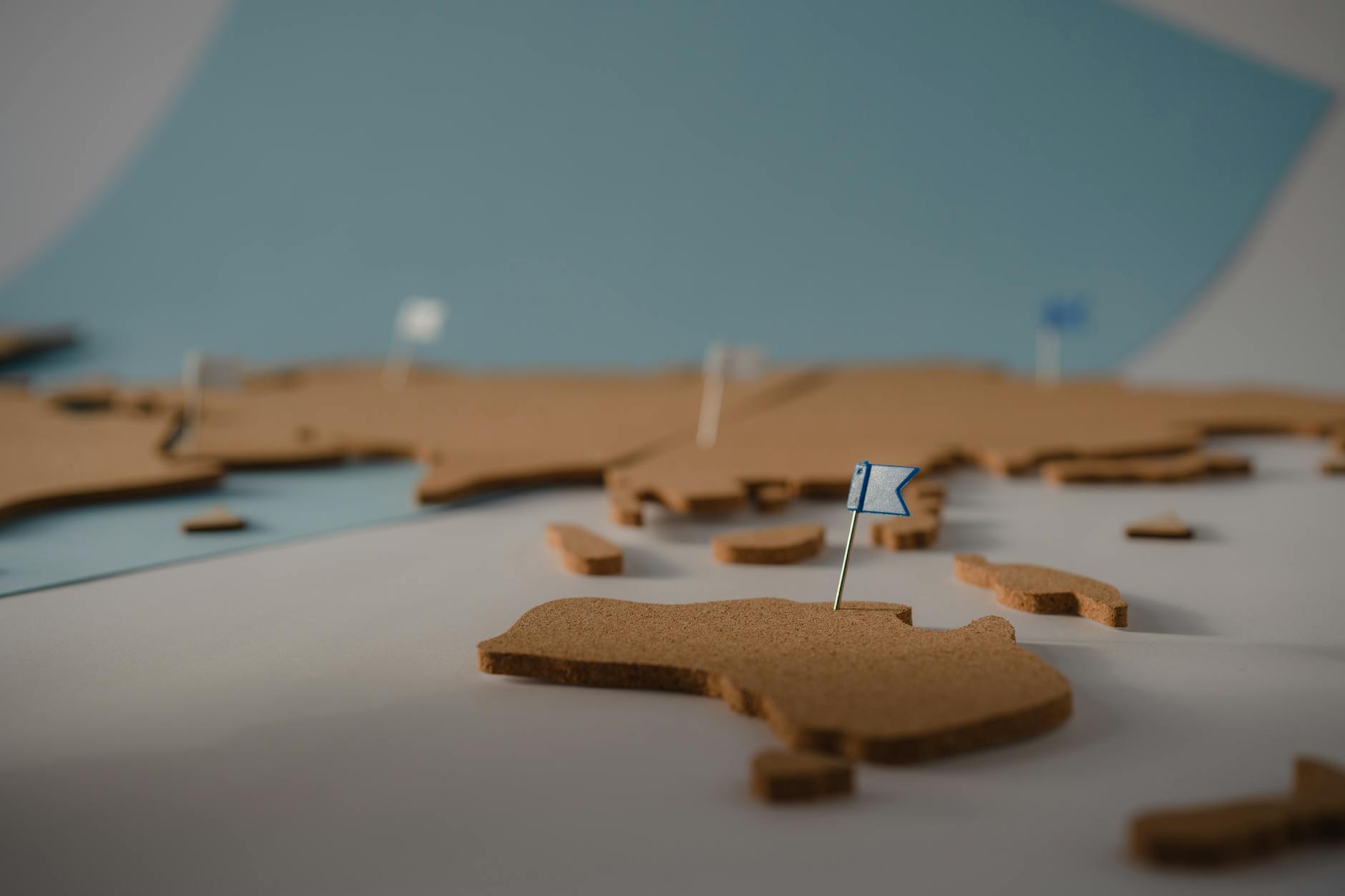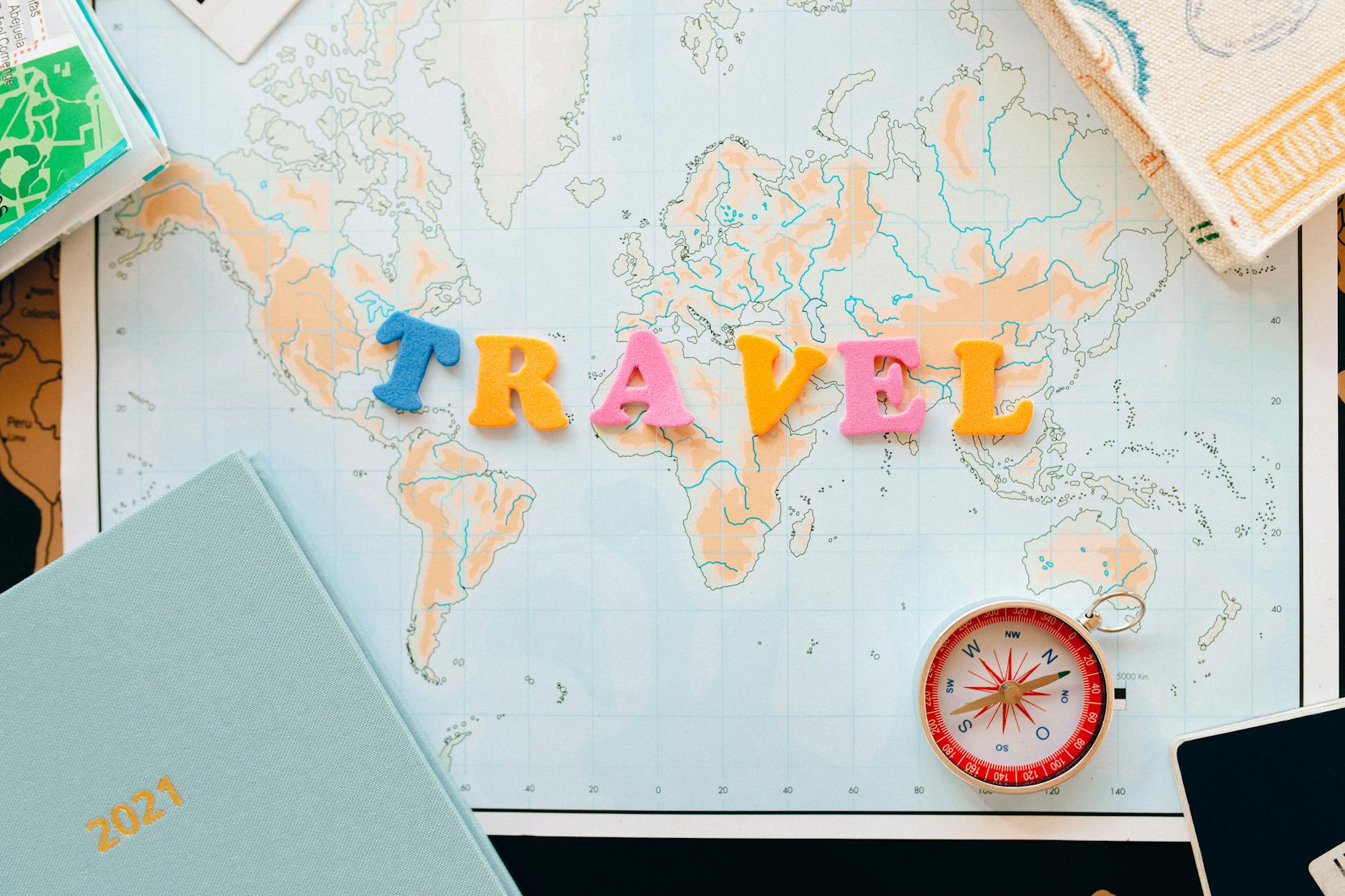How Do You Plan a Trip? Simple Travel Tips for First-Time Travelers [2025]
Planning your first trip can feel overwhelming if you don’t know where to start. Young adults and first-time travelers often ask, “How do you plan a trip without missing anything important?” This guide breaks down every stage—budgeting, booking, packing, and on-the-go essentials—into clear steps.
You’ll find practical travel tips designed for complete beginners, including the answers to the most common FAQs. The goal: help you avoid costly mistakes and reduce stress, so your first adventure goes smoothly. If you’ve ever felt lost planning a trip, you’re in the right place for advice you can trust.
Decide on Your Type of Trip

Photo by Andrea Piacquadio
Before you start searching for flights or packing your bag, get clear about the type of travel experience you want. Picking the “why” behind your trip shapes almost every other decision—from where you go to how much you spend. Whether you picture yourself hiking mountains, lounging on a beach, or touring famous cities, being honest about your interests and goals makes planning much easier. One smart way to answer “how do you plan a trip” is to let your personality and time frame lead the way.
Popular Types of Trips for Beginners
There’s no one right way to travel—just the style that’s right for you. Most first-time travelers find it helpful to start with types that are low-stress and easy to organize.
Here are common trip styles for new travelers:
- City Sightseeing: Visiting major cities is usually beginner-friendly. You get creature comforts, clear maps, and plenty to see within a short distance.
- Beach Relaxation: If you want to unwind, beach towns and resorts promise easygoing days. Many offer packaged deals that take the hassle out of booking.
- Nature Getaways: National parks and scenic spots bring you closer to the outdoors. Camping or guided tours are great ways to dip your toes in.
- Family Trips: Traveling with family? Choose destinations with simple logistics and kid-friendly attractions to keep things smooth.
- Solo Adventures: Traveling alone means total freedom. Pick safe, walkable areas where you feel comfortable exploring (Discover top places for beginners).
- Group or Tour Packages: Joining a tour means someone else handles the schedule, and it’s a relaxed way to meet people.
Let Your Interests and Goals Guide You
Your personal interests should always be the starting point. Love food? Consider cities with strong food scenes. Interested in art? Head where museums and galleries are top attractions. If connection is your thing, a group trip brings instant company. If peace and solo time matter, pick somewhere quiet.
Ask yourself:
- What do I most enjoy doing in my free time?
- Do I want adventure, downtime, or a mix?
- Am I more interested in nature or city life?
Setting goals helps, too. Some travelers want to try something new, while others care about building confidence on the road. You can even brainstorm a list of travel goals as a way to clarify what you want (See practical advice on setting travel goals).
Think About Your Time Frame
Your available time matters as much as your interest. A weekend getaway works best for a city break or a quick escape. If you have a week or more, you can think about exploring a region, trying multiple cities, or diving deeper into a country.
A few time-based ideas:
- 1-4 days: Stay local or visit one nearby city.
- 5-7 days: Explore one country or a couple of neighboring cities.
- 10+ days: Combine cities, countryside, or even different countries if logistics allow.
Matching your trip style to the amount of time you have helps you avoid feeling rushed or missing what excites you most (Find more on step-by-step trip planning).
Remember, there’s no perfect answer for how do you plan a trip—it all starts by knowing yourself and what makes you happy on the road.
Choose Your Travel Destination

Photo by Marina Leonova
You’ve settled on your type of trip and what you want to get out of it—now it’s time to pick where you’re actually going. Choosing a travel destination is a big step in answering “how do you plan a trip” that feels right for you, especially if you’ve never done this before. Let’s break down what you should think about to make your first destination not just possible, but exciting.
Factor in Your Budget Upfront
Start with what you can afford. Not every place fits every wallet, and money shapes where you’ll go, how long you’ll stay, and what you’ll do.
- Work out your total spending limit for flights, places to stay, food, sights, and extras.
- Compare costs of different countries or cities—some are cheaper for food and hotels.
- Keep an eye out for places where your currency goes further or where you can save with package deals.
A helpful resource for comparing price points and hidden costs is looking at how other travelers figure out their priorities and budgets.
Make Safety a Priority
Feeling safe matters more than anything. Choose destinations known for being friendly to newbies and solo travelers. Check travel advisories, and read traveler reviews of neighborhoods.
- Stick to places with a good reputation for welcoming visitors.
- Stay away from countries with current safety or political warnings.
- Research scams or risks common for tourists.
Official government travel sites and real traveler stories can help you spot areas with strong safety reputations for visitors.
Think About Weather and Season
Weather is a game changer. Rain or extreme heat can ruin plans and your mood.
- Check the best months to visit—some places have rainy or hurricane seasons.
- Look for mild, comfortable climates if you don’t want weather stress.
- Keep in mind local holidays or festivals, which might bring crowds or raise prices.
A simple search by “best time to visit” plus your dream city is a smart move before you book anything.
Tackle Language Barriers and Culture
Traveling somewhere new can mean facing a different language or culture, but some places are easier for beginners.
- Pick countries where English is widely spoken if you’re worried about getting by.
- Research local customs, tipping rules, greetings, and dress codes so you feel less out of place.
- Use apps, phrasebooks, or translation tools for smoother conversations.
Some destinations, like Western Europe or Southeast Asia, are popular with first-timers because locals often speak multiple languages and are used to newcomers.
Get Inspired and Do Your Online Research
Not sure where to start? Let inspiration help, then narrow it down.
- Follow travel blogs, Instagram travel pages, or search “best places to travel for beginners” for easy destination ideas.
- Ask friends or family for their favorites—they know you best.
- Use online reviews and travel forums to see what others liked and didn’t like.
- Compare destinations side by side to see which fits your list of must-haves.
Websites like Nomadic Matt’s “how to deal with choice” guide can help break down that overwhelming feeling of too many options.
Beginner-Friendly Destinations to Consider
If you want to keep things simple and stress-free, some places are classics for a reason:
- Western Europe: London, Amsterdam, Paris, and Barcelona are city breaks with lots of English speakers, public transport, and well-marked sights.
- Southeast Asia: Thailand or Vietnam offer budget-friendly trips, welcoming locals, and lots of other travelers.
- Australia or New Zealand: Laid-back, safe, and easy for English speakers.
- Japan: Super clean, friendly, and excellent for first-timers—even if the language is unfamiliar, signs often include English.
See more ideas and practical suggestions in this guide to best places to travel for beginners.
Choosing your destination takes research, but it should feel like the fun part. Focus on places that fit your needs and interests, not just what sounds exciting to someone else.
Set Your Travel Budget

Photo by Christina Morillo
Setting your budget is where trip planning gets real. Your spending limits help answer the big question—how do you plan a trip that’s realistic for you? Think of your budget as the foundation of your travels. A clear plan keeps you from running out of money and lets you enjoy your adventure without constant stress.
Estimate Your Major Costs
Before booking anything, get a rough idea of the main expenses you’ll face. Breaking your budget into categories makes the process less overwhelming:
- Flights: Usually the biggest cost. Use search engines like Google Flights or Skyscanner and try flexible dates.
- Accommodation: Consider hotels, hostels, or short-term rentals based on your comfort and budget level.
- Food: Research average daily meal costs in your destination. Think about whether you’ll cook, eat street food, or dine in restaurants.
- Activities & Attractions: List the top sights or tours you want. Entry fees can add up.
- Visas and Entry Fees: Some destinations require you to buy a visa or pay specific tourist taxes.
- Travel Insurance: Protect yourself against unexpected health or trip emergencies. Compare basic and comprehensive plans. (See travel insurance deals here.)
- Transportation: Don’t forget trains, buses, taxis, or car rentals once you’re there.
Use travel forums or tools like Budget Your Trip to compare average costs in your chosen city or country. This gives you a solid baseline to work from.
Use Digital Tools and Apps for Smart Planning
Modern budgeting tools can take the guesswork out of “how do you plan a trip” on a budget. Here are a few apps and resources that will make your planning easier:
- Travel Budget Calculators: Sites like BudgetBakers help you forecast and track travel spending before and during your trip.
- Expense Trackers: Apps like Trail Wallet, TravelSpend, or Mint let you log expenses daily, so you keep your spending in check.
- Shared Spreadsheets: Google Sheets or Excel can help if you like to set up your own custom tables, especially for group trips.
These apps keep everyone on the same page and help fight the urge to splurge mid-trip.
Tips to Save Money Without Missing Out
Sticking to your budget doesn’t mean having a boring trip. Here are a few smart ways to make your money go further:
- Book flights and hotels in advance for the biggest savings.
- Stay in hostels, budget hotels, or with friends and family.
- Cook some of your meals, or look for street food and local markets to cut costs.
- Buy city tourist passes for free or discounted entry to top attractions.
- Walk, bike, or use public transportation instead of taxis or rideshares.
- Travel in the offseason for lower prices on everything.
First-timers often find more ways to save after reading advice from those who’ve done it before—check out this relatable discussion on planning and budgeting for a trip.
Laying out your travel budget early helps you make smarter choices about where to splurge and where to save. Getting clear with your numbers is one of the most important steps if you want to turn the “how do you plan a trip” question into real, memorable adventures.
Start Planning Your Trip Details
You’ve chosen your destination and budget—what’s next in answering “how do you plan a trip” as a first-timer? The details come now. Set yourself up for a smooth journey by booking wisely, sorting your paperwork, plotting your days, and packing efficiently. Here’s how to make each step less stressful and way more fun.
Bookings and Reservations
Booking flights, buses, or trains for the first time feels confusing. Start with flights—they often set the framework for your trip. Use well-known search engines and compare options across different dates to find the best deals. Booking early usually means lower prices, especially during busy seasons. For a step-by-step walk-through, check out this simple guide to booking flights for beginners.
When it comes to places to stay, weigh what matters most: price, privacy, or proximity to sights. Hostels and budget hotels help you save, while short-term rentals offer a homey feel. Read reviews and map the location so you’re not stuck far from attractions or transport. Look for flexible cancellation policies—plans can change.
Reserve sightseeing tours and museum tickets ahead when you can, especially for popular sites. Some experiences (like cooking classes or guided hikes) fill up fast. Use official sites or well-reviewed platforms for booking so you aren’t scammed. Tip: If you want to do something specific (skydiving, day trips), lock it in after your main flights but before you arrive.
Key Documents and Travel Requirements
A little paperwork can save a lot of stress. You’ll need these travel essentials:
- Valid passport (with at least 6 months before expiration)
- Visa (if required by your destination)
- Government-issued ID
- Travel insurance documents
- Copies (digital and paper) of all the above
Always double-check entry requirements—these can change quickly. The U.S. State Department’s visa page and resource sites like JoinSherpa offer up-to-date info on what paperwork and health requirements you’ll need.
Don’t forget medical prep. Some countries want proof of vaccinations, especially since COVID-19. Pack your insurance card, prescriptions, and check if your coverage works abroad.
Learn a bit about local laws and customs to avoid simple mistakes, like what you’re allowed to bring in or what’s frowned upon. A quick online search or guidebook can help you stay in the clear.
Build Your Itinerary
Striking a balance between structure and freedom makes trips go smoother. Start with your “can’t miss” sights. Group them by area to save time and money moving around. Then, build in some free hours for naps, walks, or spontaneous exploring.
Sample framework for an itinerary:
- Day 1: Arrival and quick city stroll
- Day 2: Top museum in the morning, lunch at a local spot, relaxed afternoon park visit
- Day 3: Day trip or guided tour
- Day 4: Free day (markets, coffee shops, unplanned finds)
Too rigid kills the fun, but zero plan means missing highlights. More tips and real-world examples can be found in this simple itinerary guide for beginners. Free templates can also help you organize your days without losing flexibility.
Packing Made Simple

Photo by Khunkorn Laowisit
Packing is underrated—smart packing means fewer headaches. Start with the absolute essentials:
- Passport, visa, and key documents (paper + digital copies)
- Change of clothes for 3-5 days
- Comfortable walking shoes
- Basic toiletries (toothbrush, toothpaste, deodorant, travel-sized liquids)
- Phone, charger, power adapter
- Reusable water bottle and snacks
- Any medicines and basic first-aid
- Small locks for bags
Decide if a carry-on or checked bag fits your trip. Carry-on works well for short trips and keeps things simple, while checked bags are for longer stays or if you need more space for gear. For most, packing lighter is better—less to haul and less to lose. Leave “just in case” items at home.
Travelers swear by rolling clothes to save space, packing cubes for sorting, and a dedicated pouch for documents. Keep valuables and must-haves in your day bag.
For more packing tips and an expanded list, explore this ultimate travel packing checklist.
Staying organized with bookings, paperwork, activities, and your luggage makes the rest of “how do you plan a trip” much easier. Tackle these details one at a time, and you’ll already look like a seasoned traveler.
Travel Smart: Tips for Smooth Planning

Photo by Nataliya Vaitkevich
Ready to take “how do you plan a trip” from confusing to crystal clear? Staying organized, flexible, and calm is easier than it sounds. Simple routines, easy-to-use apps, and a few smart habits can cover most travel surprises. Here’s how you can keep your plans together—no stress required.
Stay Organized With Digital Tools and Simple Backups
Travel planning can spiral out of control if your info is scattered. The right apps and habits will help you stay on top of everything:
- Use a travel planning app like Google Trips, TripIt, or Roadtrippers to keep flight times, hotel reservations, and activity tickets in one place.
- Back up your documents—save digital copies of your passport, visas, and key reservations in your phone and in the cloud (Google Drive or Dropbox works well). Print a few paper copies as a backup.
- Keep a daily checklist on your phone’s Notes app or in a small notebook for the essentials—this keeps last-minute worries away.
- Try packing cubes or organizers to sort clothes, chargers, and toiletries. You’ll find what you need quickly and avoid messy bags. For more product ideas, check out these travel organization essentials and gear.
Manage Your Schedule Without Stress
Having a basic plan for each day helps, but travel isn’t homework. Mix must-do sights with open time:
- Add your most important reservations and tours to your phone calendar with alarms.
- Plan big sights for the start of the day when you have the most energy.
- Keep one or two blocks of free time in the afternoon or evening for spontaneous fun.
- Share your plans with a friend or family member at home for backup.
A good schedule feels like a road map, not a chain. If things change, adjust and move on.
Stay Calm and Flexible On the Go
Even well-planned trips hit a snag—missed buses, rain, or places closing early. The best travel memories often come from changes in plan. Here’s how to roll with it:
- Save offline maps of your destination in advance in case you lose Wi-Fi.
- Carry a portable battery to keep your phone powered up.
- Have a shortlist of backup activities or places to eat nearby if plans fall through.
- Don’t stress about seeing everything. Aim for quality time, not checklist travel.
For extra organization hacks, this list of ways to stay organized while traveling includes more tips from travel experts.
Common Planning Mistakes and How to Avoid Them
Most new travelers hit the same snags at least once. Here are the top mistakes beginners make—and how to skip them:
- Overpacking: Too much stuff slows you down. Pack light and do laundry if needed.
- Not checking passport/visa rules: Double-check entry requirements and passport expiration at least a month out.
- Forgetting to budget for extras: Save room for snacks, souvenirs, or last-minute tours in your budget.
- No backup of travel docs: Always have at least a digital backup. Losing a passport is a headache you can avoid.
- Trying to fit in too much: A packed schedule means you’ll run out of energy and miss the best moments.
- Ignoring travel insurance: Accidents happen. Basic insurance can save you from big bills and headaches.
A little planning and a calm mindset equal a smooth trip every time. Keep things simple, stay flexible, and you’ll travel like you’ve done it a hundred times.
For personal stories and more practical advice, take a look at this Reddit discussion on staying organized while traveling.
FAQs: How Do You Plan a Trip for the First Time?
If you’re a first-time traveler asking “how do you plan a trip” from scratch, these quick-fire answers cover the essentials. These are the most common beginner questions, with honest tips that calm nerves and set you up for success.
What is the best type of trip for a first-time traveler?
Opt for destinations and styles that are easy to manage. Large cities, friendly resort towns, or organized tour packages are beginner-friendly and less stressful. They offer support systems, clear transportation, and lots of travelers like you.
- City sightseeing: Major cities often have reliable public transportation and English-speaking locals.
- Guided group tours: Someone else handles the details so you can focus on fun.
- Resort stays: Everything is on-site and support is always close.
- National Parks: Well-marked trails and helpful rangers make exploring safe and simple.
If you want to see how other beginners start their plans, check real advice in this Reddit thread on how do you start planning a trip or this deep-dive step-by-step trip planning guide for beginners.
How far in advance should I start planning a trip?
Start planning at least three to six months ahead, especially if you want better deals and the widest choice. Flights and hotels often cost less when you book early. If you’re dreaming of busy destinations or traveling during holidays, aim for the six-month mark.
- Big trips (overseas, lengthy holidays): 4–8 months in advance.
- Short trips, off-season: 1–3 months is fine.
- Popular events or locations: Book as soon as you know your dates.
Planning far enough ahead will save money and stress. For timeline tips, see this discussion on how early to plan vacations.
What should I include in my travel budget?
Break your budget into these categories for the most accurate snapshot. Forgetting just one can lead to mid-trip surprises.
- Transportation: Flights, trains, buses, taxis, or car rentals.
- Accommodation: Hotels, hostels, or vacation rentals.
- Daily food/drinks: Restaurants, groceries, snacks, and coffee.
- Activities: Entry fees, tours, and entertainment.
- Travel insurance: Essential for peace of mind.
- Visas and documents: Fees for visas or necessary travel permits.
- Emergency fund: Unplanned costs or cash for little surprises.
- Souvenirs/gifts: Mementos or presents for loved ones.
For step-by-step help, try using a tool like this travel budget planner or compare other travelers’ lists on how to budget for a trip.
Is travel insurance worth it for a first trip?
Yes, travel insurance is smart, even for your first adventure. Emergencies, illness, or trip cancellations happen suddenly. Insurance covers you when things go wrong, like lost baggage or if you need medical help abroad. If your trip costs a lot or your health insurance doesn’t work overseas, it’s almost always a good idea. Basic plans often fit tight budgets and still protect you from big headaches.
Find more on when buying travel insurance makes sense in this NerdWallet article.
Are group tours a good idea for beginners?
Group tours are a great starting point if you want everything handled and prefer company as you travel. You get a ready-made schedule, expert guides, and travel friends from day one. These tours are ideal if places feel overwhelming or if you worry about language barriers.
- Pros: Less planning, built-in safety, often cheaper in groups, instant social connections.
- Cons: Less freedom, sometimes rushed, set itinerary.
Read honest opinions from travelers about whether group tours are worth it for first-timers and the pros and cons of organized tours.

Photo by Nataliya Vaitkevich
Planning your first trip can be simple with these bite-sized answers. Just stay organized, ask questions, and keep your plans flexible—you’ll have more fun and fewer surprises.
Conclusion
Planning your first adventure doesn’t have to be complicated or expensive. Get clear on what you want, research your destination, set a budget you can stick to, and book your travel details early. Keeping things simple—like packing light, using digital tools, and staying flexible—makes everything easier. You’re building good habits now, so every future trip will feel more natural.
Traveling on a budget as a young adult can open your world without draining your wallet. Focus on what excites you, skip the stress, and remember: some of the best moments happen when plans change. Want to keep learning? Visit Fodor’s beginner travel tips, try this complete beginner’s guide to budget travel 2025, or see top travel tips for 2025.
You’ve got the key steps on “how do you plan a trip”—now go make your first one count. If you have a tip or story, share it in the comments. Thanks for reading and happy travels!







